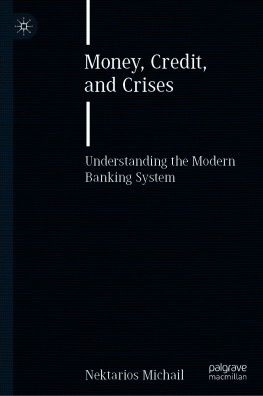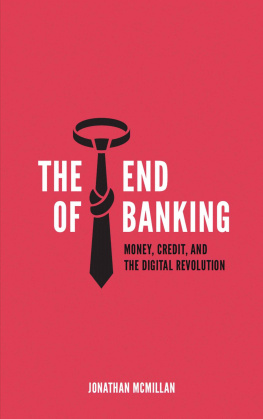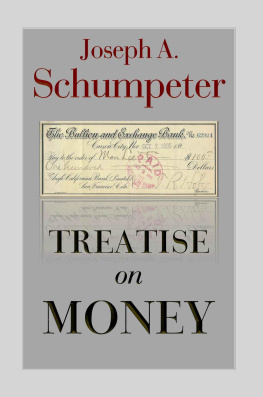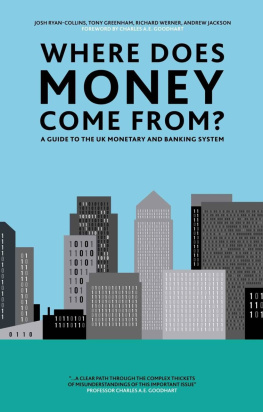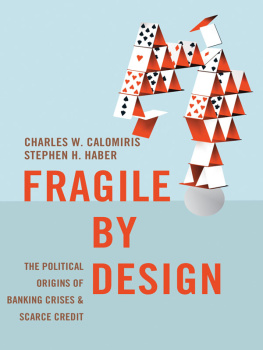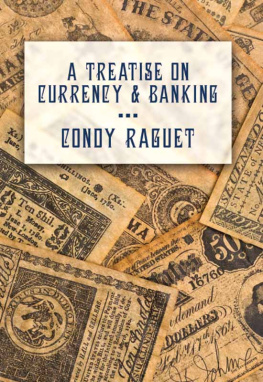Nektarios Michail - Money Credit and Crises: Understanding the Modern Banking System
Here you can read online Nektarios Michail - Money Credit and Crises: Understanding the Modern Banking System full text of the book (entire story) in english for free. Download pdf and epub, get meaning, cover and reviews about this ebook. year: 2021, publisher: Springer International Publishing, genre: Science. Description of the work, (preface) as well as reviews are available. Best literature library LitArk.com created for fans of good reading and offers a wide selection of genres:
Romance novel
Science fiction
Adventure
Detective
Science
History
Home and family
Prose
Art
Politics
Computer
Non-fiction
Religion
Business
Children
Humor
Choose a favorite category and find really read worthwhile books. Enjoy immersion in the world of imagination, feel the emotions of the characters or learn something new for yourself, make an fascinating discovery.
- Book:Money Credit and Crises: Understanding the Modern Banking System
- Author:
- Publisher:Springer International Publishing
- Genre:
- Year:2021
- Rating:4 / 5
- Favourites:Add to favourites
- Your mark:
- 80
- 1
- 2
- 3
- 4
- 5
Money Credit and Crises: Understanding the Modern Banking System: summary, description and annotation
We offer to read an annotation, description, summary or preface (depends on what the author of the book "Money Credit and Crises: Understanding the Modern Banking System" wrote himself). If you haven't found the necessary information about the book — write in the comments, we will try to find it.
Money Credit and Crises: Understanding the Modern Banking System — read online for free the complete book (whole text) full work
Below is the text of the book, divided by pages. System saving the place of the last page read, allows you to conveniently read the book "Money Credit and Crises: Understanding the Modern Banking System" online for free, without having to search again every time where you left off. Put a bookmark, and you can go to the page where you finished reading at any time.
Font size:
Interval:
Bookmark:
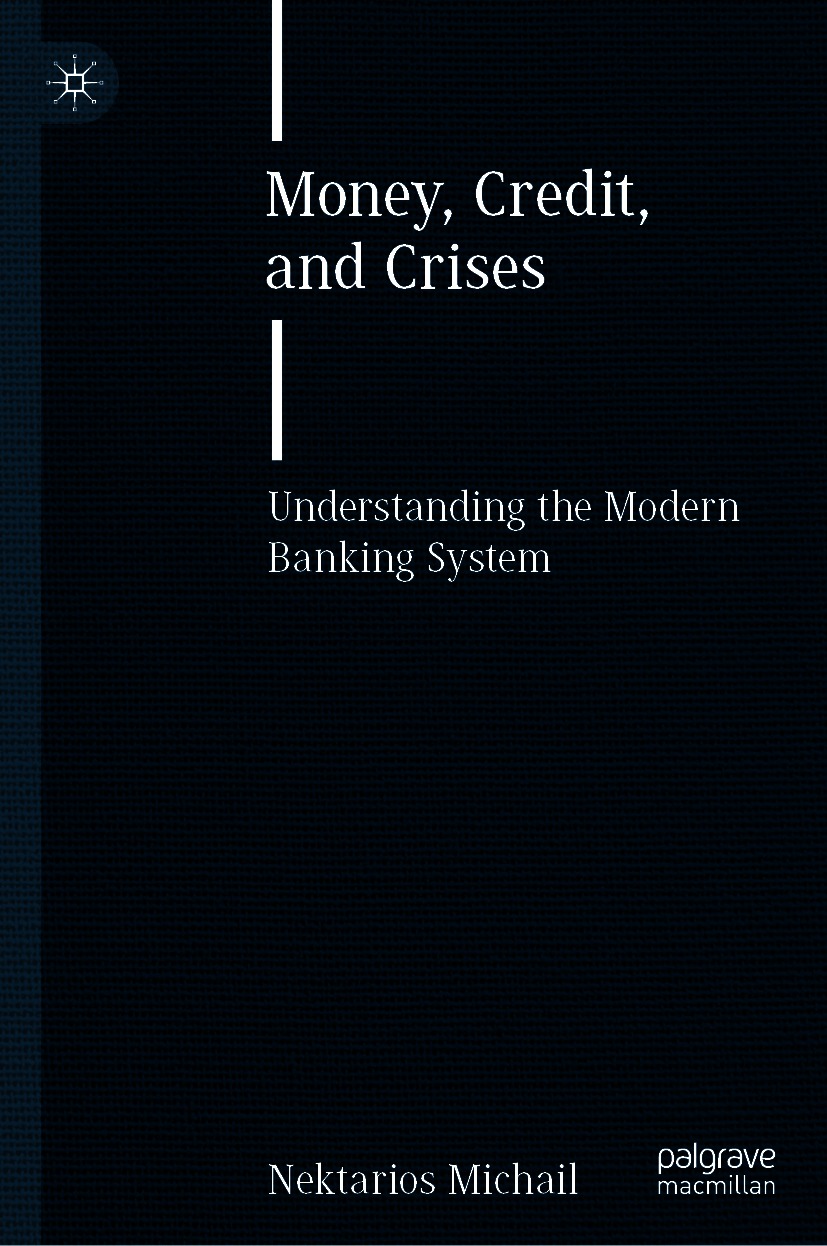

This Palgrave Macmillan imprint is published by the registered company Springer Nature Switzerland AG
The registered company address is: Gewerbestrasse 11, 6330 Cham, Switzerland
This book started off about three years ago, in an effort to fully grasp what went on with the world at the time. The first topic I had aimed to examine was the efficiency of quantitative easing policies, now Chapter of this book. In the process of finding out as much as I could about the topic, I realized that there was a lack of easy-to-read material. While academic studies, blog posts, and speeches, are aplenty, there is no simple mans guide to what this policy was all about. So I decided to create one.
In the process of this creation, I realized that an article on its own would have been pointless. How could I refer to the economics of the banking sector if there was no explanation about them before? In order to understand how quantitative easing works, one needs to understand how the world of banking works. This led to another issue: how could one appreciate the world of banking at this point in time, without looking at all the other policies which shaped it, such as deposit insurance ? Nonetheless, to look at them one would have to go back in time and elaborate on what went on during that period that caused such a paradigm shift in policy. After all of this, and many other similar thoughts and realizations, the quantitative easing chapter ended up second to last, enriched with other policy measures assumed in the last ten years.
While writing, I have always aimed to keep things as simple as possible. I find no reason for unnecessary complexity, especially if ideas, notions, and policies can be explained on the basis of a few basic principles. That said, the reader of this book should rest assured that just everyday knowledge about banking should be enough to go through it without any issue. I have assumed that the reader has only a very basic understanding of what the banking sector is and I have (hopefully) proceeded with explaining most notions as simply and thoroughly as possible.
In my mind, this book is aimed at anyone who wishes to better understand a sector which is usually riddled with mystery given that most people tend to focus on just a few parts of it. It was one of the promises I made that the focus would have been on the forest and not on the trees. As such, I have refrained from too narrowly focusing on the particulars (other than explaining their workings and effects that is) and have instead offered the big picture regarding the sector. I hope that the book will provide you with much insights and expand your knowledge on how banks work in the current environment.
Naturally, over the course of writing this book, there have been many people who have helped me in clearing my thoughts, provided me with more knowledge on the topic, or supported me along the way. My editor, Tula Weis has been extremely supporting and patient with my delays, and so have Lucy Kidwell and Balaji Varadharaju from Palgrave Macmillan and Springer Nature respectively. I would like to thank Christos Savva and Demetris Koursaros for the interesting discussions and support they have offered me since my doctoral years. Furthermore, I would like to thank the research team at the Central Bank of Cyprus, namely, George Kyriacou, Pany Karamanou, George Thucydides, Ioanna Evangelou, Charis Charalambous, Angelos Roussos, Maria Mithilou, and particularly Lena Cleanthous and Christiana Aristodemou.
Many thanks go Agorasti Patronidou, whose help in drafting Chapter (Financial Instability) has been invaluable. I owe a great deal of gratitude to Christos Vassis for meticulously going through the whole book and providing insightful comments and suggestions. Naturally, family support has been paramount throughout these years. Naturally, all remaining errors are my own.
What is money? Despite our daily use of it, it is not often that we ponder what makes something money, especially in the modern era where we take the prevalence of paper or digital money as granted. Throughout history, there have been different uses of various forms of money, and in each step in moneys advance, people have reshaped the way they do their commercial transactions and have introduced new distinctions.
In the broadest sense, in order for something to be considered as money, it needs to serve four functions: (a) being a medium of exchange, (b) an overall standard, (c) a measure of value, and (d) a store of wealth. Being a medium of exchange means that money has the ability of facilitating transactions, so long as it is accepted by all the parties involved. In this sense, practically everything can be used as money: pieces of paper with a stamp on it, cigarettes, iron, copper, and as has been the norm until the early twentieth century, gold .
Font size:
Interval:
Bookmark:
Similar books «Money Credit and Crises: Understanding the Modern Banking System»
Look at similar books to Money Credit and Crises: Understanding the Modern Banking System. We have selected literature similar in name and meaning in the hope of providing readers with more options to find new, interesting, not yet read works.
Discussion, reviews of the book Money Credit and Crises: Understanding the Modern Banking System and just readers' own opinions. Leave your comments, write what you think about the work, its meaning or the main characters. Specify what exactly you liked and what you didn't like, and why you think so.

